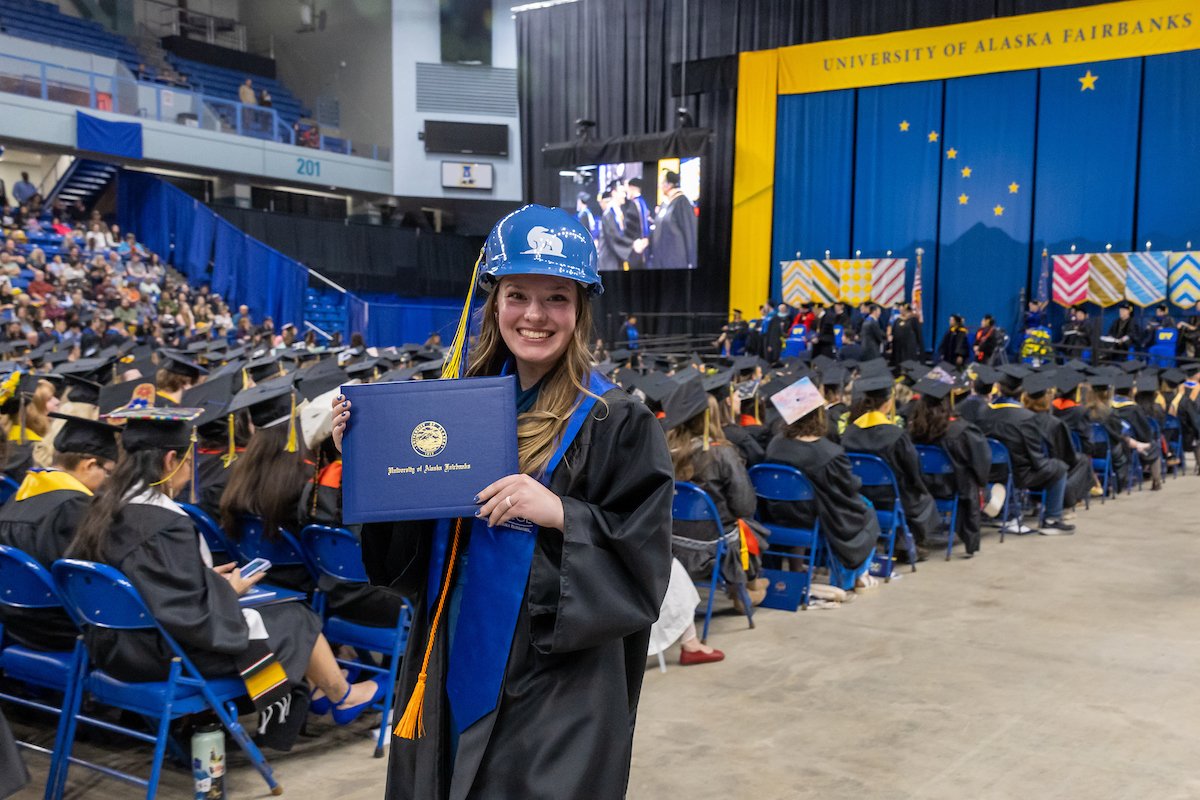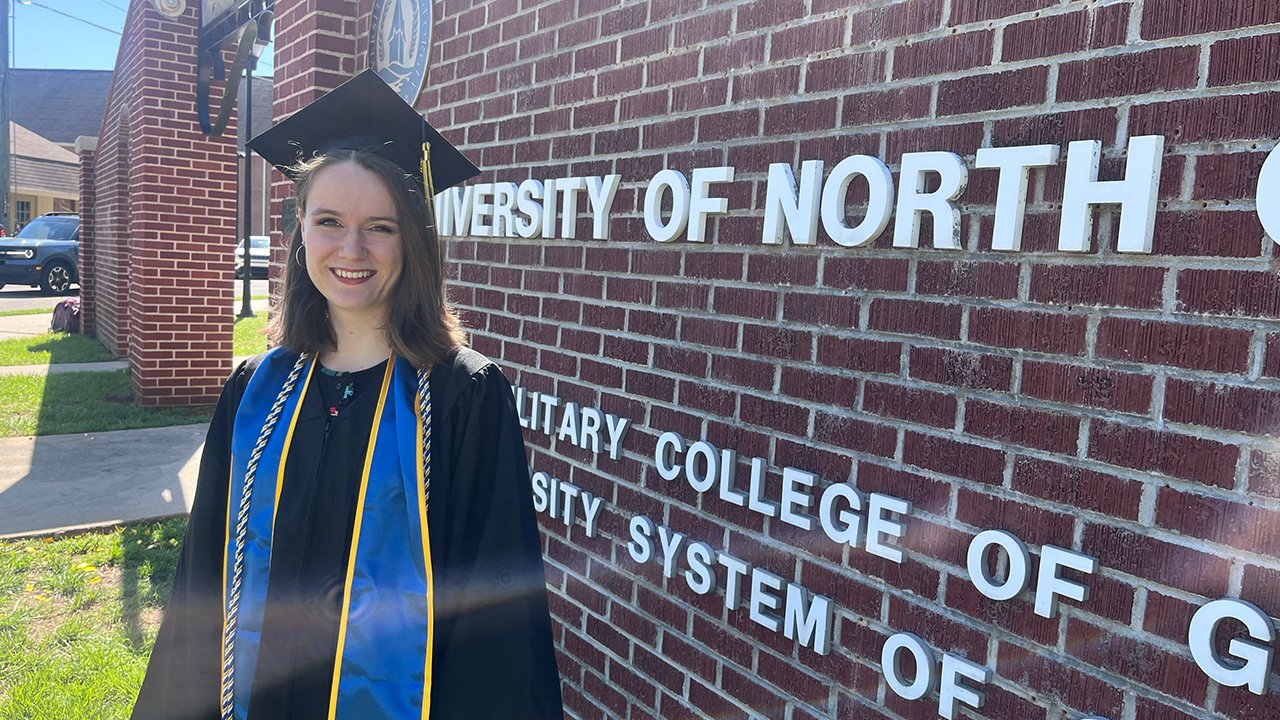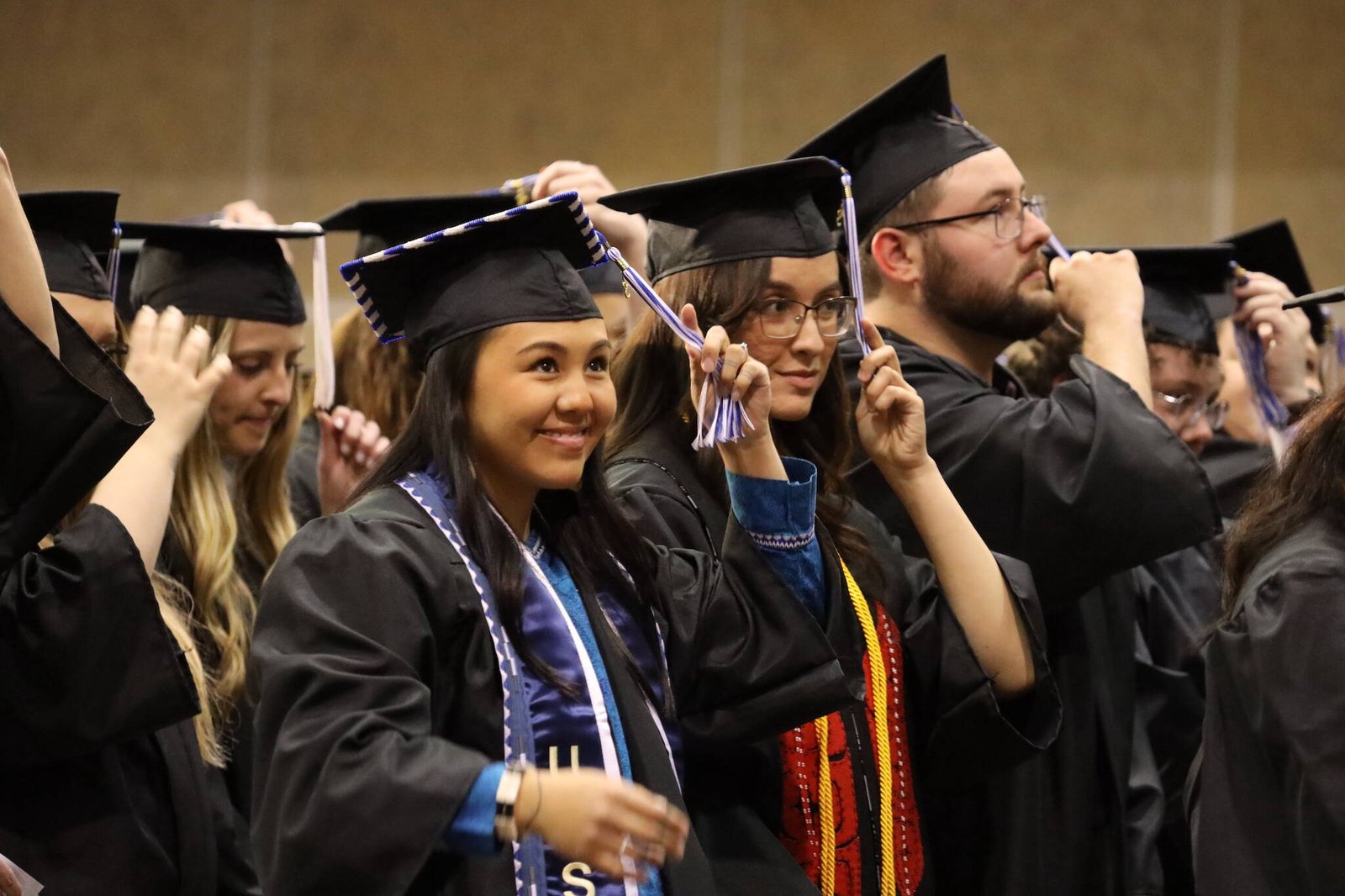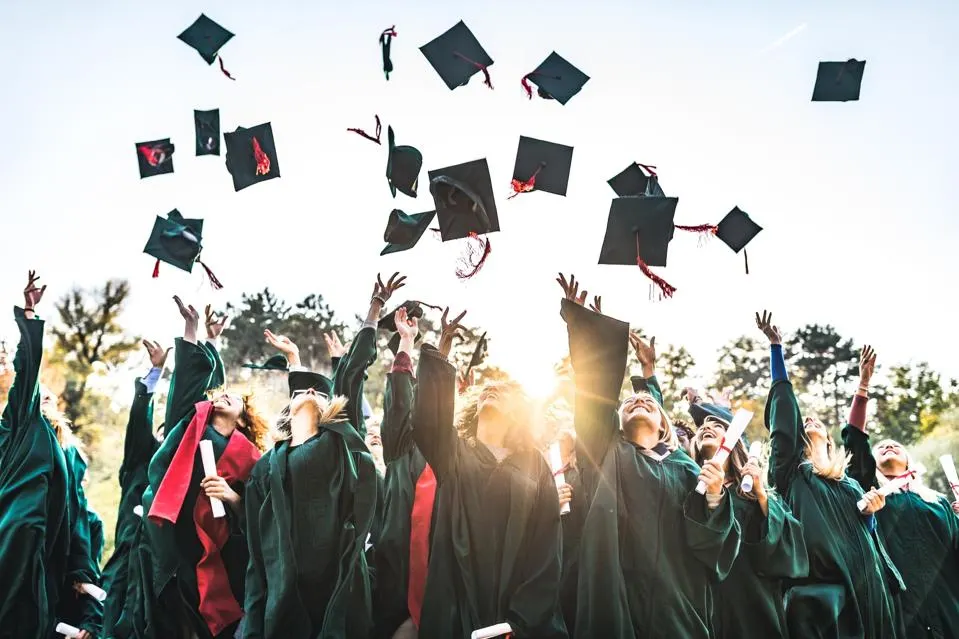Nestled amidst the breathtaking landscapes of Southeast Alaska, the University of Alaska Southeast (UAS) is shaping educators who see the world beyond the four walls of a classroom. Did you know that Amanda Friendshuh, a UAS graduate in elementary education, is revolutionizing teaching by integrating nature into her lessons through place-based training? Graduating with a Bachelor of Arts in Elementary Education in May 2020, Amanda now teaches third grade at Chapman Elementary and Middle School in Anchor Point, Alaska, while pursuing a master’s in reading specialization at UAS. Her approach—rooted in Alaska’s wild terrain and nurtured by UAS’s innovative pedagogy—is inspiring students and educators alike. As of March 29, 2025, this article delves into Amanda’s journey, offering insights into career guidance, exam preparation, scholarships and funding, student lifestyle, and study materials—a guide for those eager to follow her path.
Amanda’s Story: A Natural Connection
Growing up in a small Interior Alaska community, Amanda Friendshuh was no stranger to the outdoors. “Nature was my first teacher—rivers, forests, and snow taught me more than any book could,” she reflects in a 2020 UAS profile. This bond led her to UAS, a university celebrated for its small-campus intimacy and deep connection to Alaska’s environment. Opting for UAS’s fully online B.A. in Elementary Education, Amanda completed her degree without leaving her home region, a testament to the program’s flexibility. “UAS felt like the perfect bridge—personal support with the freedom to stay rooted,” she says.
Her training centered on place-based education, a method that leverages local culture, environment, and community as learning tools. Courses like ED S333 (Educational Psychology) and ALST603 (Alaska Studies)—the latter featuring a week-long summer residency in Juneau—immersed her in this approach. “We explored children’s literature at Egan Library and connected with Tlingit cultural events,” Amanda recalls. Today, at Chapman, she brings this philosophy to life, taking her third graders outside to measure snow for math lessons, study local plants for science, and weave Alaska Native stories into literacy—showing how nature can be a vibrant classroom.
Career Guidance: Teaching with Purpose in Alaska
Amanda’s journey offers valuable career guidance for aspiring educators. Alaska’s education landscape—serving 54,000 K-12 students across diverse urban and rural settings—craves teachers who blend innovation with cultural sensitivity. Elementary teachers here earn $70,000-$80,000 annually (2024 BLS data), with rural roles often adding stipends or housing. “It’s a career where you shape lives and communities,” Amanda says, aligning with UAS’s mission to enhance student outcomes.
UAS’s B.A. program, leading to K-8 certification, opens doors to roles like classroom teacher, literacy coach, or—as Amanda pursues—reading specialist. Demand is high: 27% of Alaska’s students are Alaska Native, requiring educators attuned to diverse needs. Career Guidance Tip: Passion for kids and adaptability are key. UAS’s online delivery suits those balancing work or family, while its focus on place-based learning preps you for Alaska’s unique classrooms—urban hubs or bush villages alike.
Exam Preparation: Conquering the Praxis
To teach in Alaska, Amanda had to pass the Praxis Core Academic Skills for Educators (CASE) exams—reading, writing, and math—a prerequisite for student teaching. “It was daunting, but UAS made it manageable,” she says. Scoring via ETS (UAS code 4897), she cleared the exams in 2019, thanks to advisor Beth Hartley’s guidance. “Beth broke it down—focus on strengths, shore up weaknesses,” Amanda notes.
Exam Preparation Insight: Start early and strategize. UAS provides online Praxis prep via Blackboard, covering essentials like essay structure and algebra. Amanda suggests free tools like Khan Academy for math and ETS’s $19 practice tests. “Simulate test day—time yourself,” she advises, a tactic that built her confidence. Rural students benefit from UAS’s e-learning—schedule tests at centers like Juneau or Anchorage (code 7027 for Alaska DEED). Consistency trumps cramming; aim for weekly practice to ace the 150-163 score range per section.
Scholarships & Funding: Making Education Accessible
UAS’s tuition—around $8,000 annually for in-state undergrads—rises with living costs, but Amanda navigated it with smart funding. “I didn’t want debt to hold me back,” she says. UAS offers scholarships like the Alaska Native Teacher Education Scholarship ($2,500-$5,000) and merit awards up to $3,000 annually via uas.alaska.edu/financialaid. Amanda snagged a need-based grant, cutting her B.A. costs by 30%. The FAFSA, due June 30, 2025, unlocks federal aid, while loans from Wells Fargo (7-9% interest) defer repayment—a boon given teaching’s quick ROI.
Scholarships & Funding Tip: Apply by February 2025 for priority—UAS’s aid pool shrinks late. Amanda’s master’s, partly funded by Chapman’s tuition reimbursement, shows employer support is key. Check Alaska’s PITAAS program for Indigenous students—it’s a pipeline for culturally responsive educators like her.
Student Lifestyle: Thriving in Alaska’s Wilds
Amanda’s UAS experience reflects a student lifestyle shaped by Alaska’s extremes. Living in Interior Alaska during her B.A., she balanced coursework with community life—think wood-stove evenings and moose sightings. “Online learning meant Zoom classes from my cabin,” she laughs. UAS’s Juneau residency flipped the script: “A week of rainforests and whale-watching—unforgettable.” Now in Anchor Point, she skis to school some days, embracing the Kenai Peninsula’s rugged charm.
Student Lifestyle Insight: Adaptability rules. UAS’s 1,200 students enjoy a tight-knit vibe—Juneau’s Auke Bay campus offers dorms ($5,000/year), while distance learners like Amanda thrive anywhere with Wi-Fi. Events like UAS’s Winter Arts Festival (February 2025) or virtual Lingít language lessons connect the community. “Balance study with nature—hike or fish,” she suggests, echoing her active approach. Anchor Point’s small-town pace suits her, but urbanites can opt for UAS’s Sitka or Ketchikan hubs.
Study Materials: Tools for Success
Amanda’s success hinged on robust study materials. UAS’s Blackboard hosts ED S333 lecture slides and ALST603 readings—think Alaska Native tales for lesson planning. “I paired those with local library books on ecology,” she says. For Praxis, she used ETS’s free sample questions and Khan Academy’s math drills. Her master’s taps UAS’s e-journals—over 1 million via Egan Library—covering literacy strategies.
Study Materials Tip: Blend digital and hands-on. Free tools like Coursera’s “Teaching Foundations” ($49 audit) or edX’s “Child Development” supplement UAS offerings. Amanda’s go-to? “Print key notes—Alaska’s long nights kill screens.” For place-based lessons, she recommends The Alaska Native Reader—a cultural anchor for her classroom. UAS’s virtual tutoring (Zoom-based) helps, too—schedule via uas.alaska.edu.
Place-Based Training: Nature as Co-Teacher
Amanda’s classroom is a living lab. “We don’t just read about weather—we measure it in snowdrifts,” she says. Place-based training, honed at UAS, uses Anchor Point’s environment—Cook Inlet tides, spruce forests—as curriculum. A 2024 Nature study notes such methods boost engagement 20% in elementary students, and Amanda sees it daily: “Kids connect math to snow depth or science to salmon runs.” Her master’s sharpens this, integrating reading with local lore—think Tlingit stories of Raven.
UAS’s approach, blending e-learning with field experience, prepped her perfectly. “A Juneau residency showed me how to weave culture into lessons,” she says. At Chapman, she collaborates with local elders, enriching her third graders’ understanding of Alaska’s 27% Alaska Native population. “It’s about relevance—nature and heritage make learning stick,” she adds, a philosophy UAS instilled.
Career Guidance: Beyond the Classroom
Amanda’s story inspires broader career paths. Beyond teaching, her skills suit roles like curriculum designer ($60,000-$85,000) or environmental educator ($50,000-$70,000). “Place-based training opens doors—museums, parks, nonprofits,” she muses. Her master’s could lead to literacy consulting ($80,000+), leveraging Alaska’s push for reading proficiency (2024 DEED goal). Career Tip: Network via UAS’s alumni X group (@UASAlumni)—Amanda landed summer workshops this way.
Exam Preparation: The Master’s Leap
Pursuing her M.Ed., Amanda faces graduate exams like the Praxis Reading Specialist test. “It’s tougher—focuses on diagnostics,” she says. UAS’s grad resources—sample rubrics, literacy case studies—guide her, alongside Reading Rockets online. “Study groups on Zoom keep me sane,” she laughs. Tip: Block 10 hours weekly; grad school demands discipline.
Scholarships & Funding: Grad Support
Her master’s, costing $12,000 total, taps UAS’s Graduate Tuition Waiver (up to 50% for high GPA) and Chapman’s aid. “Every dollar counts,” she says. Funding Tip: Apply by May 2025—grad aid is competitive.
Student Lifestyle: Juggling Act
Teaching full-time while studying part-time tests Amanda’s grit. “Weekends are for assignments, but I ski to recharge,” she says. Anchor Point’s quiet suits her, though UAS’s virtual community—think online coffee chats—keeps her connected. “It’s intense but doable,” she adds.
Study Materials: Grad-Level Tools
Her M.Ed. leans on UAS’s e-journals (Journal of Literacy Research) and Visible Learning by John Hattie. “Local texts—like Salmon in the Trees—tie my thesis to place,” she says. Tip: Use UAS’s interlibrary loan—priceless for rural learners.
The Bigger Picture: Alaska’s Future
Amanda’s work aligns with Alaska’s educational needs—27% Alaska Native students need culturally responsive teaching, per 2024 data. UAS’s CAEP-accredited programs ensure grads like her meet this call. “Nature-based learning builds resilience,” she says, a nod to a 2024 Nature trend. Her third graders—future stewards of Alaska’s wilds—prove it daily.
Conclusion: Your Turn to Teach
Amanda Friendshuh’s story showcases UAS’s power to transform educators. From career guidance to exam prep, scholarships to student lifestyle, her journey offers a blueprint. “Alaska’s outdoors taught me—now I teach with it,” she says. Aspiring teachers, take note: apply by May 2025 (uas.alaska.edu), tap study materials, and embrace place-based learning. The classroom awaits—nature included.
-

UAS Students Conquer Juneau’s Icefield: A 10-Day Expedition of Resilience, Discovery, and Scientific Exploration
-

Did You Know? Recent Changes to Alaska Scholarships Have Made Getting a Degree or Certificate from UA More Manageable Than Ever
-

Did You Know? UAA Helps Students Overcome Past Academic Setbacks with Structured Support and Guidance
-

Did You Know? Over 2,500 UA Students Are Expected to Graduate This Spring
-

Did You Know? Graduates of UA Schools of Education Are Empowering Their Communities
-

Did You Know? Students Can Earn College Credit While Interning in the Alaska Capitol
-

Celebrating Diversity and Leadership: Indigenous Graduates Shine in UAS Educational Leadership Program
-

Unlocking Opportunities: How Recent Changes to Alaska Scholarships Make Higher Education More Accessible Than Ever
-

The University of Alaska: A Pillar of Progress and Prosperity for the State and Its Economy
-

Did You Know UAA Helps Students Overcome Past Academic Setbacks with Structured Support and Guidance?

